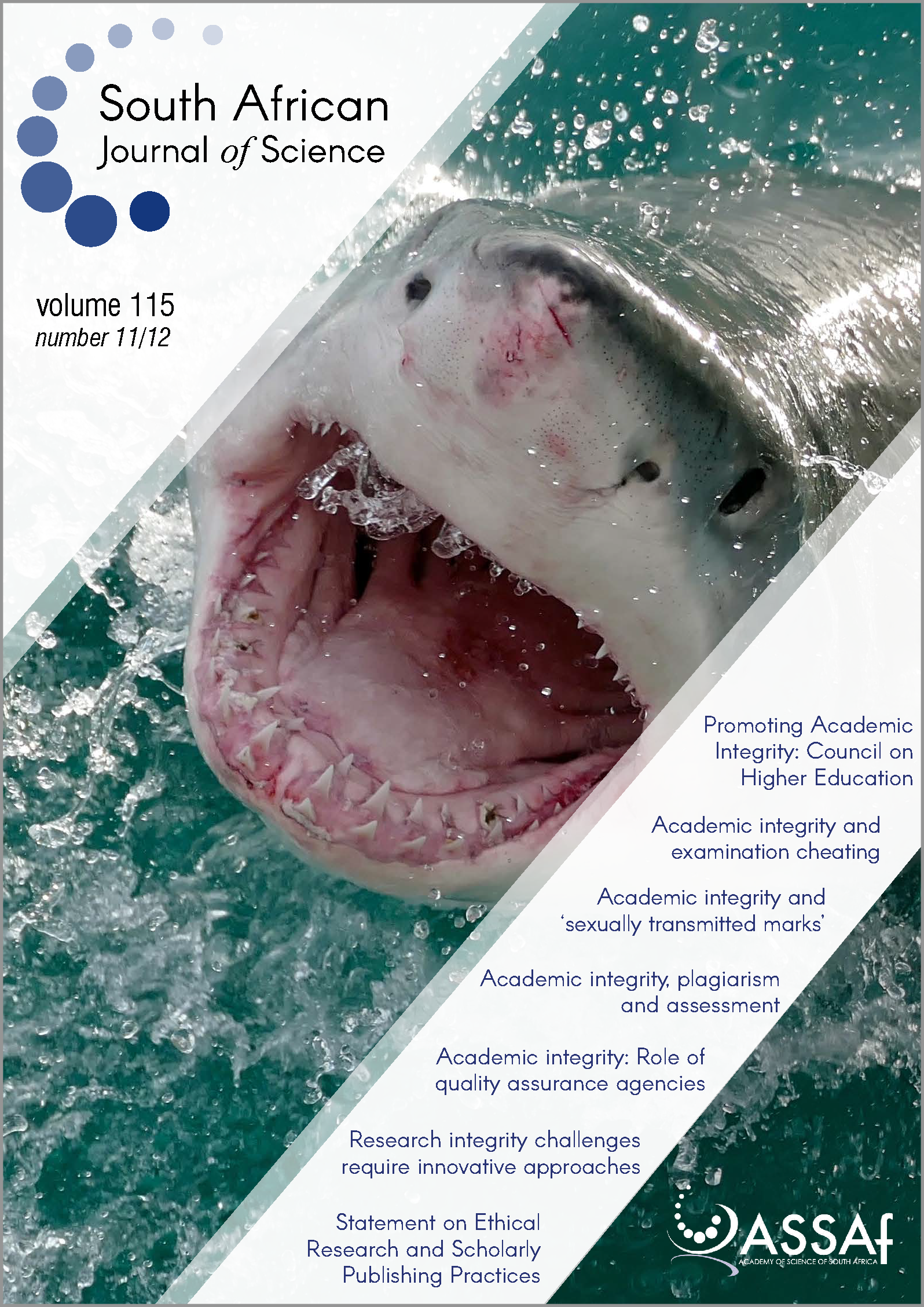Antimicrobial activity and toxicity profile of selected southern African medicinal plants against neglected gut pathogens
DOI:
https://doi.org/10.17159/sajs.2019/6199Keywords:
anaerobe, biofilms, traditional medicine, intra-abdominal infections, medicinal plants, minimum inhibitory concentrationAbstract
Anaerobes outnumber aerobic bacteria in the human gut. The most commonly isolated microorganisms in intra-abdominal infections include Escherichia coli, Peptostreptococcus micros as well as Bacteroides and Clostridium species. Several studies have been undertaken on southern African medicinal plant species and their antimicrobial efficacy against pathogens such as E. coli that cause stomach ailments. However, pathogens such as Helicobacter pylori, Fusobacterium varium as well as others have been neglected in medicinal plant antimicrobial research. The aim of this study was to evaluate the antimicrobial activity of selected medicinal plants documented for stomach ailments against neglected gut pathogens. A total of 102 aqueous and organic extracts were prepared from 40 different plant species. These plant samples were screened for antimicrobial efficacy against eight anaerobes and two microaerophilic strains using the micro-dilution antimicrobial assay. Plant extracts that displayed noteworthy antimicrobial activity against Clostridium perfringens were further evaluated for antibiofilm activity using the crystal violet staining assay. The toxicity profiles of plants that displayed noteworthy antimicrobial activity were evaluated using the brine shrimp lethality assay which revealed that most of the tested plant samples were non-toxic in nature, and the aqueous extracts proved to be safer. The organic extract of Lippia javanica leaf showed the best antimicrobial activity with a minimum inhibitory concentration of 0.5 μg/mL against C. perfringens. The organic extract of Salvia africana-caerulea displayed the best antibiofilm activity overall, at cell attachment (4 h) biofilm developmental stage with inhibition percentages of 82.8%.
Significance:
- L. javanica and Gunnera perpensa demonstrated the highest antimicrobial activity with minimum inhibitory concentrations of 0.5 μg/mL and 2.0 μg/mL against C. perfringens, respectively.
- Salvia africana-caerulea was the most effective plant species demonstrating biofilm attachment.
- Lowest toxic effects were observed for the organic extracts of Aloe marlothii, A. tenuior, Bridelia cathartica, G. perpensa leaf and the aqueous extracts of G. perpensa (leaf and rhizome).
- This study demonstrates, for the first time, both antimicrobial and antibiofilm activities for most of these plant species against neglected anaerobes.
- Noteworthy antimicrobial activities in many cases validate traditional use and safety.
Published
Issue
Section
License

All articles are published under a Creative Commons Attribution 4.0 International Licence
Copyright is retained by the authors. Readers are welcome to reproduce, share and adapt the content without permission provided the source is attributed.
Disclaimer: The publisher and editors accept no responsibility for statements made by the authors
How to Cite
- Abstract 1559
- PDF 884
- EPUB 214
- XML 391













.png)